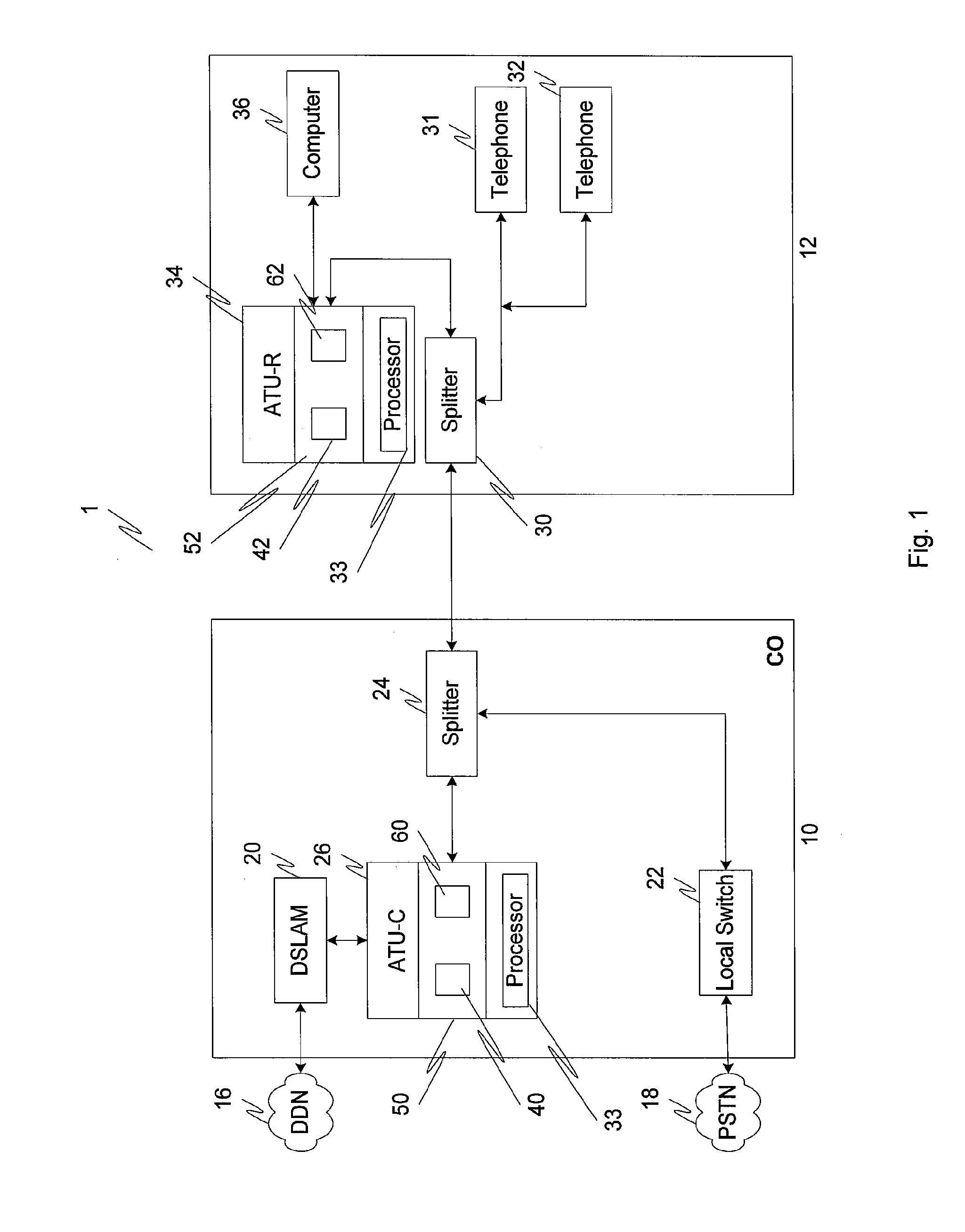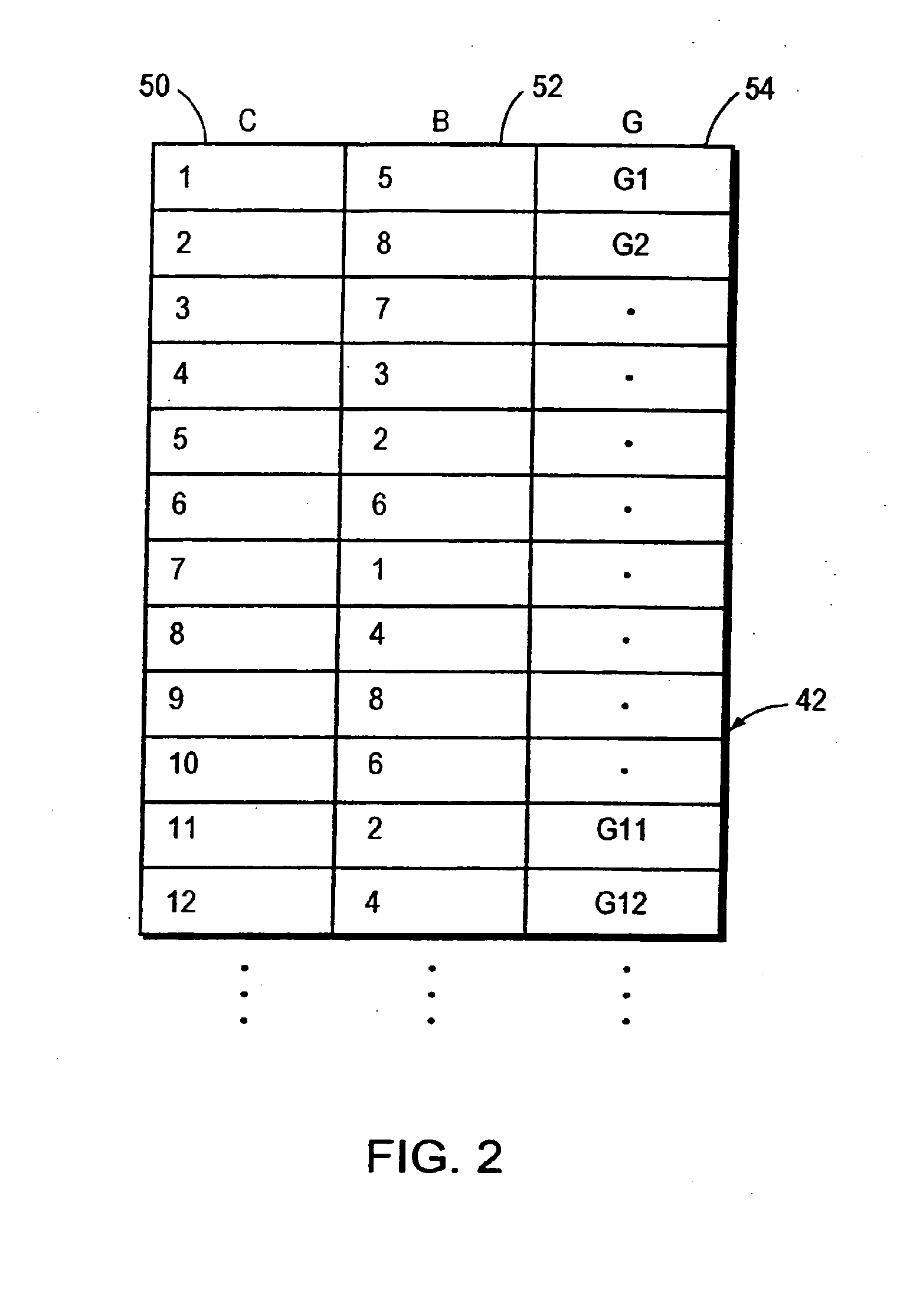Bit alocation among carriers in multicarrier communications
a multi-carrier communication and carrier technology, applied in the field of communication systems, can solve the problems of increasing the likelihood of errors being corrected, and achieve the effect of minimizing the number of respective channels, improving the efficiency of error correction, and minimizing the probability of errors being corrected
- Summary
- Abstract
- Description
- Claims
- Application Information
AI Technical Summary
Benefits of technology
Problems solved by technology
Method used
Image
Examples
Embodiment Construction
[0033]FIG. 1 shows a DSL communications system wherein the present invention may be advantageously used. As shown in FIG. 1, a telephone central office (“CO”) 10 is connected to a remote subscriber 12 (“CP: Customer Premises”) by a subscriber line or loop 14. Typically, the subscriber line 14 comprises a pair of twisted copper wires; this has been the traditional medium for carrying voice communications between a telephone subscriber or customer and the central office. Designed to carry voice communications in a bandwidth of approximately 4 kHz (kilohertz), its use has been greatly extended by DSL technology.
[0034]The central office is, in turn, connected to a digital data network (“DDN”) 16 for sending and receiving digital data, as well as to a public switched telephone network (“PSTN”) 18 for sending and receiving voice and other low frequency communications. The digital data network is connected to the central office through a digital subscriber line access multiplexer (“DSLAM”)...
PUM
 Login to View More
Login to View More Abstract
Description
Claims
Application Information
 Login to View More
Login to View More - R&D
- Intellectual Property
- Life Sciences
- Materials
- Tech Scout
- Unparalleled Data Quality
- Higher Quality Content
- 60% Fewer Hallucinations
Browse by: Latest US Patents, China's latest patents, Technical Efficacy Thesaurus, Application Domain, Technology Topic, Popular Technical Reports.
© 2025 PatSnap. All rights reserved.Legal|Privacy policy|Modern Slavery Act Transparency Statement|Sitemap|About US| Contact US: help@patsnap.com



